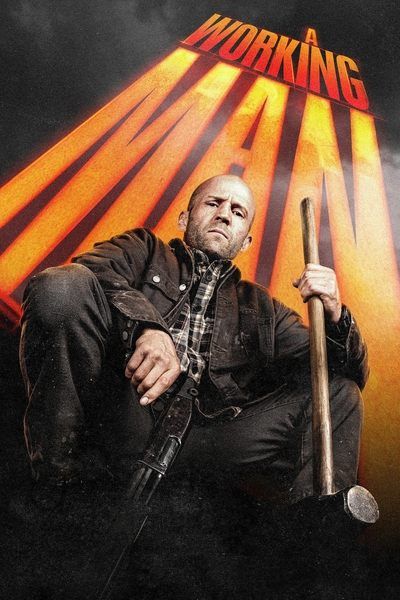A Working Man (2025) is a deeply human and poignant exploration of labor, identity, and the resilience of the human spirit. The film follows the story of a dedicated factory worker who, after spending decades in the same job, faces the abrupt closure of the plant where he’s worked tirelessly. Suddenly thrown into an uncertain future, he is forced to confront the realities of his life’s work, his relationships, and his sense of purpose. This powerful narrative reflects on themes of sacrifice, survival, and the fundamental need for meaning in one’s life.
At its heart, A Working Man (2025) is a character-driven story, primarily focusing on the emotional and psychological toll of losing one’s livelihood. The protagonist, who has spent most of his adult life in the factory, represents a larger class of workers whose identities are often defined by their jobs. The story takes a raw and honest look at how the closure of the factory shakes the foundation of this man’s world, leaving him to grapple with feelings of purposelessness and displacement. The film delicately explores the impact of industrial decline on working-class communities, shedding light on the struggles that individuals face when their sense of identity and stability is suddenly torn away.
One of the standout qualities of the film is its portrayal of the protagonist’s internal conflict. His struggle is not just external—dealing with unemployment and finding a new path forward—but deeply personal as well. As he wrestles with feelings of anger, frustration, and fear, he must also come to terms with the relationships that have been shaped by his work. The film’s pacing allows for an exploration of these emotional layers, giving viewers a sense of the isolation and inner turmoil that often accompanies such a major life change.
The script excels in its ability to highlight the small but significant moments in the life of the protagonist, from his interactions with family members to his reflections on the factory and his colleagues. It’s in these seemingly ordinary moments that the true depth of the character emerges. His journey is marked by an underlying sense of grief—not just for the loss of his job but for the time he feels has been lost to a system that has ultimately cast him aside. There’s an almost universal resonance in his experience, as it speaks to the broader issues of labor rights, economic hardship, and the fading relevance of traditional industries in today’s world.
The film also masterfully addresses the social dynamics within the factory and the community. As the plant’s closure looms, the relationships between the workers become more strained, with some seeking new opportunities while others wrestle with resignation. The protagonist’s struggle to adapt to this new reality is mirrored by those around him, making the narrative even more universal in its themes. The film doesn’t shy away from showing the harshness of economic shifts, but it also highlights moments of hope and solidarity, especially within the protagonist’s family and among his co-workers.
Visually, A Working Man (2025) uses the factory setting to its advantage, utilizing the stark, industrial environment to symbolize the protagonist’s sense of entrapment. The factory, with its machines, assembly lines, and drab concrete walls, becomes a metaphor for the monotony and rigidity of his life before the closure. The cinematography highlights the contrast between the claustrophobic, mechanical world of the factory and the open, uncertain future that lies ahead for the protagonist. The muted color palette reinforces the film’s somber tone, while moments of warmth and color offer glimpses of hope, particularly in scenes involving the protagonist’s family.
The performances in A Working Man (2025) are exceptional, with the lead actor delivering a deeply affecting portrayal of a man caught between his past and an uncertain future. His ability to convey the complex emotions of loss, shame, and defiance is what drives the emotional weight of the film. The supporting cast, particularly those portraying his family and fellow workers, add depth to the story, bringing a sense of authenticity and realism to the film’s depiction of working-class life. The chemistry between the protagonist and his family members is particularly noteworthy, as it serves as a reminder that despite external struggles, personal connections remain vital to one’s sense of self.
Another key aspect of the film is its exploration of the human need for purpose. As the protagonist tries to find a new identity outside of his job, he struggles with the notion of who he is if he’s not a factory worker. The film thoughtfully questions what gives people meaning in their lives and how that meaning can shift when circumstances change. This existential crisis, while personal to the protagonist, is something that resonates with broader societal issues—many people find themselves in similar situations when their jobs are automated, outsourced, or otherwise eliminated.
A Working Man (2025) is bittersweet, leaving viewers with a sense of quiet reflection. While there is no easy resolution or neat ending, the film presents a hopeful message about human resilience. The protagonist’s journey is not one of redemption in the traditional sense, but of acceptance and adaptation. He learns that while the factory may have defined his past, it is not the only thing that defines his future. His journey towards finding new meaning is uncertain, but it is filled with possibilities, offering a message of hope for anyone who has faced loss or change in their lives.
Overall, A Working Man (2025) is a compelling and poignant drama that explores the universal struggles of identity, purpose, and resilience in the face of adversity. Through its well-crafted script, strong performances, and emotionally resonant themes, it captures the complexities of life in a changing world. This film is not just a story about a factory worker—it is a story about all of us, as we navigate the challenges and changes that life inevitably brings.
